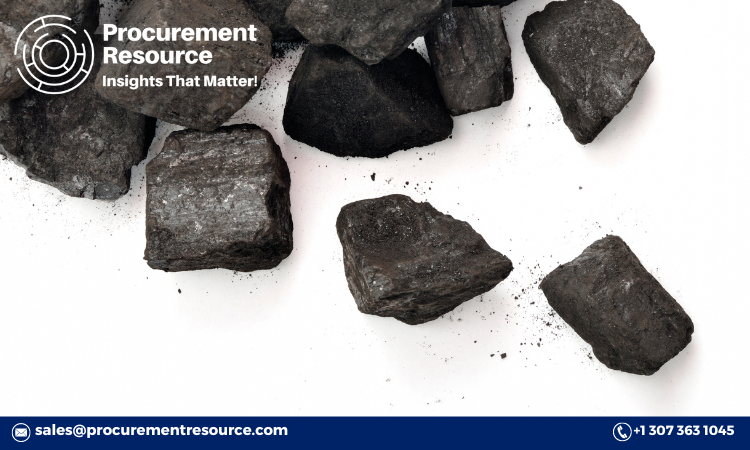Coal remains a pivotal energy source globally, fueling industries and providing energy across multiple sectors. This comprehensive report covers the coal production process, including key stages, required raw materials, cost analysis, and market implications. Let’s explore the journey of coal from extraction to end-use.
1. Overview of Coal Production
Coal production is the process of extracting coal from the earth and refining it to be suitable for various applications. This process includes mining, preparation, transportation, and marketing of the final product. Each stage plays a crucial role in ensuring that the coal meets quality standards and industry requirements.
Request For Sample: https://www.procurementresource.com/production-cost-report-store/coal/request-sample
2. Types of Coal Mining
Coal extraction methods vary depending on the location and depth of coal deposits. Two primary types of mining are:
- Surface Mining: This method is typically used for coal deposits located closer to the earth’s surface. It involves the removal of overburden (soil and rock above the coal seam) and is suitable for strip and open-pit mines.
- Underground Mining: For coal deposits located deeper underground, miners use this technique, which involves digging shafts and tunnels. Methods such as room-and-pillar and longwall mining are commonly employed in this process.
3. Stages in Coal Production
The coal production process involves several critical stages:
a. Exploration and Development
- Geological surveys and sampling are conducted to locate and estimate coal reserves.
- The development phase includes creating access points to the coal seam, building infrastructure, and acquiring permits.
b. Mining and Extraction
- In surface mining, heavy machinery removes the overburden and extracts coal.
- In underground mining, miners use machinery like continuous miners or longwall shearers to retrieve coal from the seam.
- Collected coal is transported to the preparation plant or directly to the market.
c. Coal Preparation and Processing
- Coal is crushed, sized, and washed to remove impurities such as sulfur, ash, and soil.
- The cleaning process involves separation methods like dense medium separation and froth flotation.
- After processing, coal is classified according to its intended use (e.g., thermal coal for power generation or metallurgical coal for steel production).
d. Transportation
- Coal is then transported to its final destination via railways, ships, and trucks.
- Infrastructure like railways and ports is essential for facilitating efficient coal logistics.
e. Storage and Marketing
- Coal is stored in stockpiles or silos before being distributed to customers.
- Marketing coal includes negotiating with buyers, setting prices, and securing long-term contracts with power plants, industries, and other sectors.
4. Key Market Drivers in Coal Production
- Demand from Power Generation: Thermal coal remains essential for electricity generation in many parts of the world, especially in emerging economies.
- Metallurgical Coal Demand: Steel production requires high-quality metallurgical coal (coking coal), driving its demand.
- Industrial Applications: Various industries, including cement and chemicals, utilize coal as a key input.
- Energy Transition: Although renewable energy is growing, coal remains a reliable energy source due to its cost-effectiveness.
5. Cost Analysis of Coal Production
The cost of coal production varies by mining method, location, and quality. Key cost factors include:
- Labor Costs: These vary widely depending on the location, safety regulations, and productivity levels.
- Equipment and Maintenance: Mining equipment is capital-intensive and requires regular maintenance to ensure efficiency.
- Processing and Transportation: Processing coal to meet quality standards and transporting it to market are significant cost contributors.
- Environmental Compliance: Compliance with environmental regulations, including pollution control and land reclamation, adds to the overall cost of production.
6. Environmental Impact and Sustainability
- Air Pollution: Coal mining and combustion release CO2, methane, and particulate matter, contributing to climate change and air quality issues.
- Water Usage: Coal preparation and mining require considerable water, which can impact local water resources.
- Land Reclamation: Mining companies are required to rehabilitate land post-mining to restore ecosystems, which is a significant cost and environmental consideration.
7. Challenges in Coal Production
- Market Volatility: Coal prices fluctuate due to changes in demand, environmental regulations, and competition from alternative energy sources.
- Regulatory Pressures: Increasingly stringent environmental regulations, especially in developed countries, pose challenges to coal producers.
- Shift Towards Renewables: The global energy transition toward renewables impacts coal demand and pressures producers to adopt cleaner technologies.
8. Future of Coal Production
- Despite challenges, coal remains a crucial energy source in many regions. The industry is evolving with technologies aimed at improving efficiency and reducing environmental impact.
- New opportunities exist in cleaner coal technologies and carbon capture, utilization, and storage (CCUS), which can mitigate emissions.
Coal production remains a vital industry with significant economic and industrial impacts. As the global energy landscape evolves, coal producers face both challenges and opportunities. Understanding the production process, costs, market dynamics, and environmental considerations is essential for industry players and stakeholders.
Contact Us:
Company Name: Procurement Resource
Contact Person: Endru Smith
Email: sales@procurementresource.com
Toll-Free Number: USA & Canada - Phone no: +1 307 363 1045 | UK - Phone no: +44 7537 132103 | Asia-Pacific (APAC) - Phone no: +91 1203185500
Address: 30 North Gould Street, Sheridan, WY 82801, USA












Leave a Reply